Indochina War was a conflict between French forces and Vietminh revolutionaries of French Indochina from 1946 to 1954. Indochina is the eastern half of the Southeast Asian mainland peninsula. It consists of the present-day countries of Cambodia, Laos, and Vietnam. At the time of the war, the French controlled Cambodia, Laos, and cities in Vietnam. The Vietminh were Communist nationalists fighting for an independent Vietnam. Most of the fighting in the war, which is sometimes called the First Indochina War, took place in northern Vietnam.
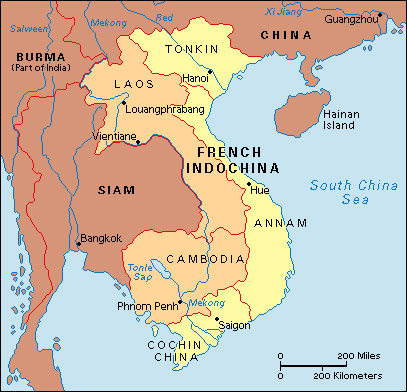
France lost the war and withdrew from Indochina. The peace agreement that ended the war recognized Cambodia and Laos as independent countries. Vietnam did not gain complete independence, however. It was divided into the separate zones of Communist North Vietnam and non-Communist South Vietnam. Tensions between the two zones led to the Vietnam War (1957-1975), also known as the Second Indochina War.
Background.
France colonized Indochina in the late 1800’s. Over time, resistance to French rule grew, particularly in Vietnam. During World War II (1939-1945), Japanese troops occupied Indochina, giving rise to a number of armed resistance movements. After Japan surrendered in 1945, Ho Chi Minh—head of the Communist Revolutionary League for the Independence of Vietnam (Vietminh)—declared an independent Democratic Republic of Vietnam (DRV). The DRV was based in the northern part of the country, with its capital in Hanoi. Soon after Minh established the DRV, French forces occupied the Vietnamese city of Saigon in the south. French and Vietminh leaders tried to settle their differences peacefully, but failed.
About half the French forces in Indochina were actually French. The rest included units of the French Foreign Legion; colonial troops from North and West Africa; and troops from Indochina—including many Vietnamese who rejected Communism. The United States provided the French with equipment and weapons, as well as a small number of advisers, mechanics, and aircrew. Communist China and the Soviet Union supported the Vietminh.
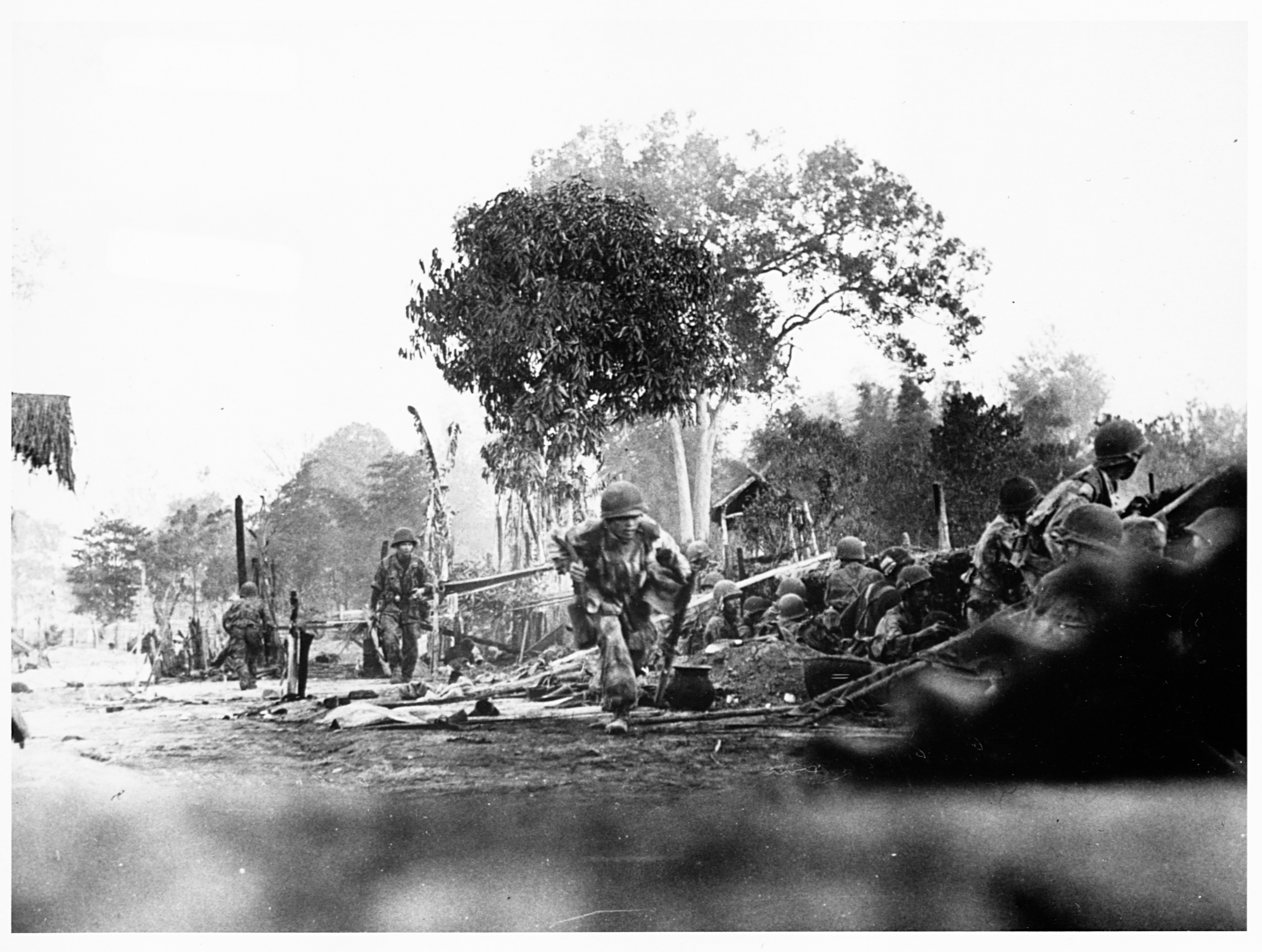
The war.
In late November 1946, a French-Vietminh dispute led to a French naval bombardment of the northern city of Haiphong. Fighting then erupted between Vietminh and French troops in Hanoi on December 19—which is considered the starting date of the war. French and Vietminh soldiers then also clashed in Hue, Nam Dinh, and other cities. Early in 1947, the Vietminh pulled back into the rugged Viet Bac region near the Chinese border. Fighting continued there and in other places through 1948.
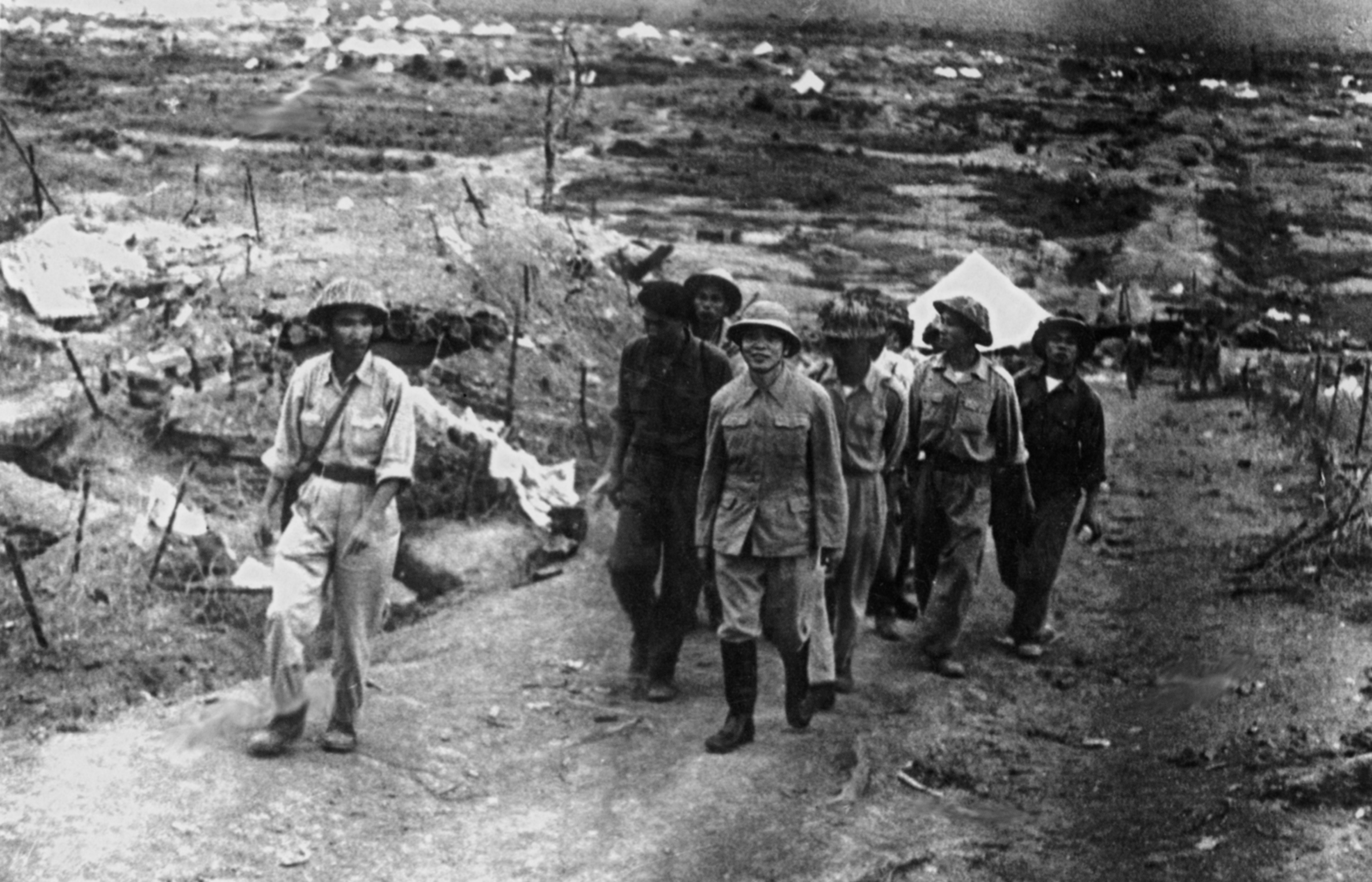
In 1949, Communist forces won the civil war in China, and supplies and support flooded across the border to help the Vietminh. In response, the United States began directly aiding the French in Vietnam. That same year, the French created the Associated States of Indochina, which included Cambodia, Laos, and Vietnam, within the French Union. The Associated States were backed by the Americans and opposed to the DRV. Former Vietnamese emperor Bao Dai headed the government of the Associated State of Vietnam.
The Vietminh—who greatly outnumbered the French—launched major attacks in 1950. An offensive in southern Vietnam failed badly, but the Vietminh took Lao Cai and the French stronghold of Dong Khe in the north. In 1951, the Vietminh suffered terrible casualties (people killed, wounded, missing, or captured) in failed attacks at Vinh Yen, near Hanoi; at Mao Khe, near Haiphong; and along the Day River. By 1952, fighting had shifted into the mountainous Hoa Binh region southwest of Hanoi. In November, another Vietminh attack failed at Na San near the Laotian border.
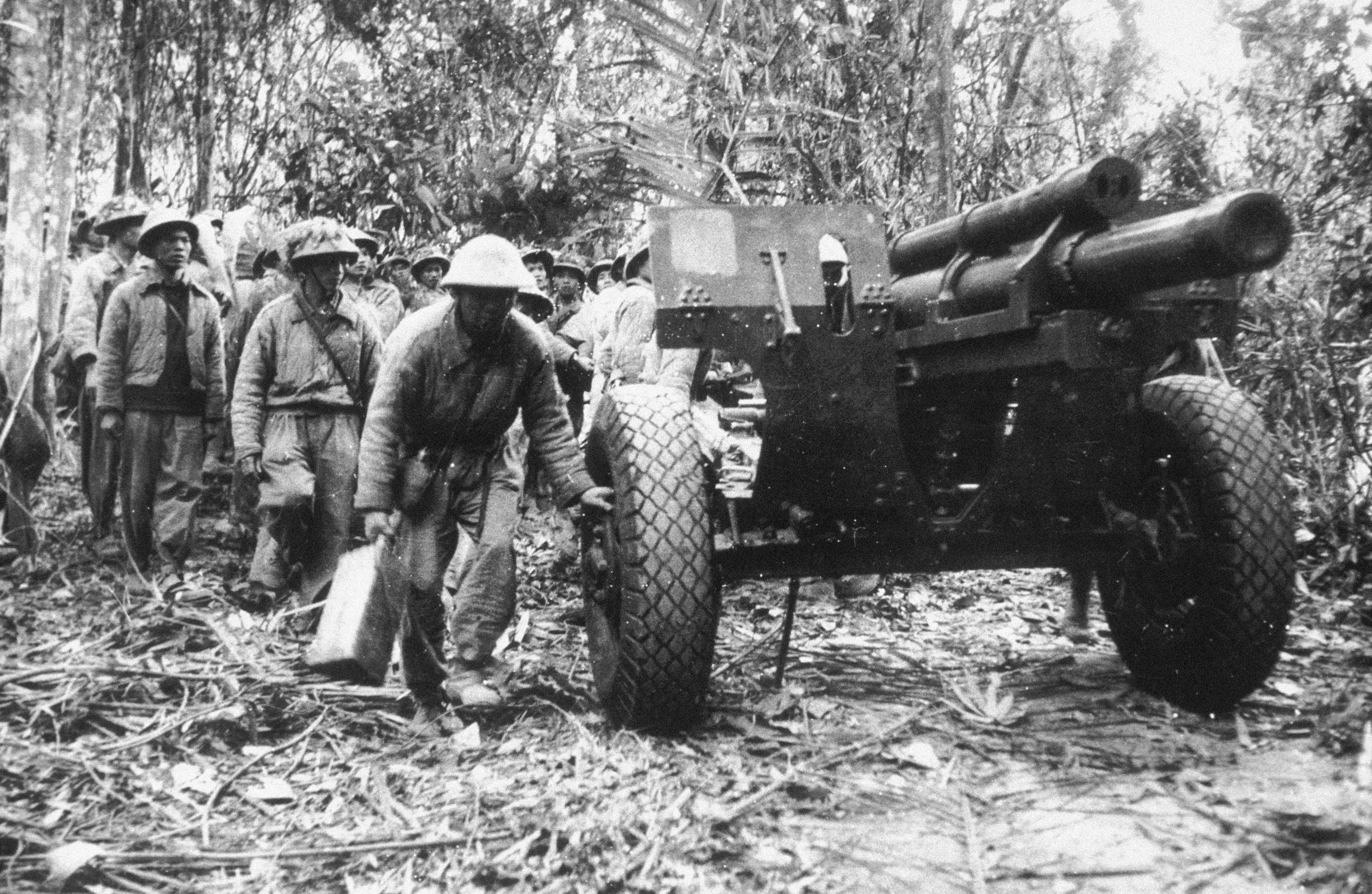
In 1953, the French focused on preventing a Vietminh invasion of Laos, a French ally. To block attack routes into Laos, the French fortified the remote village of Dien Bien Phu. Nearly all French troops, equipment, and supplies arrived by air. The Vietminh watched the build-up and began planning what would become the war’s last major and decisive battle.
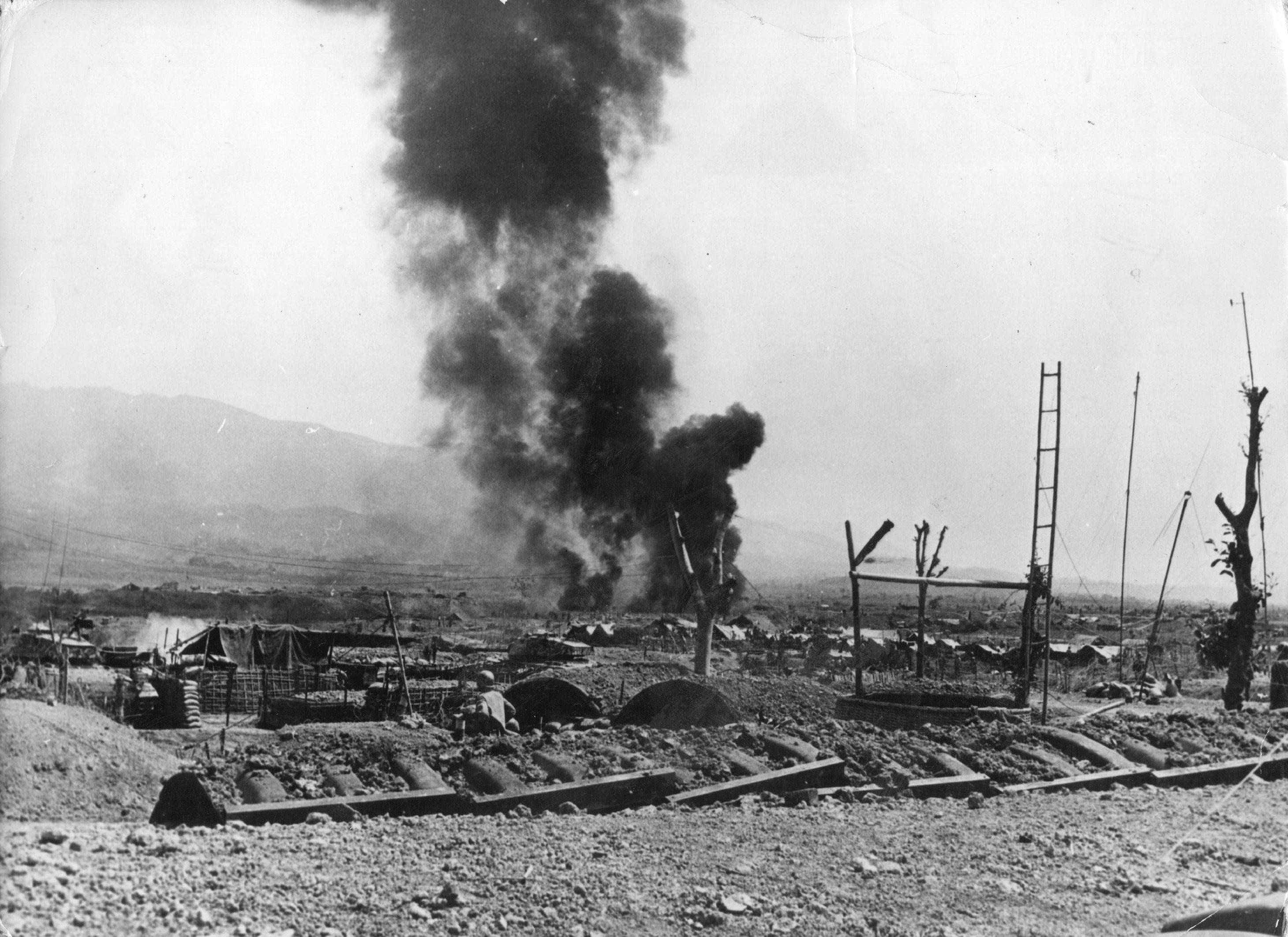
By early 1954, the Vietminh had concentrated large forces—including heavy artillery and antiaircraft guns—around Dien Bien Phu. They launched a massive assault on March 13. The Vietminh soon destroyed the French airfields, and their antiaircraft guns fired on planes dropping supplies and paratroopers over the Dien Bien Phu battlefield. The surrounded and outnumbered French held out for 56 days before finally surrendering on May 7. The costly defeat—and the war’s unpopularity in France—convinced the French to give up. A series of agreements known as the Geneva Accords were signed on July 21, 1954, and officially ended the war. 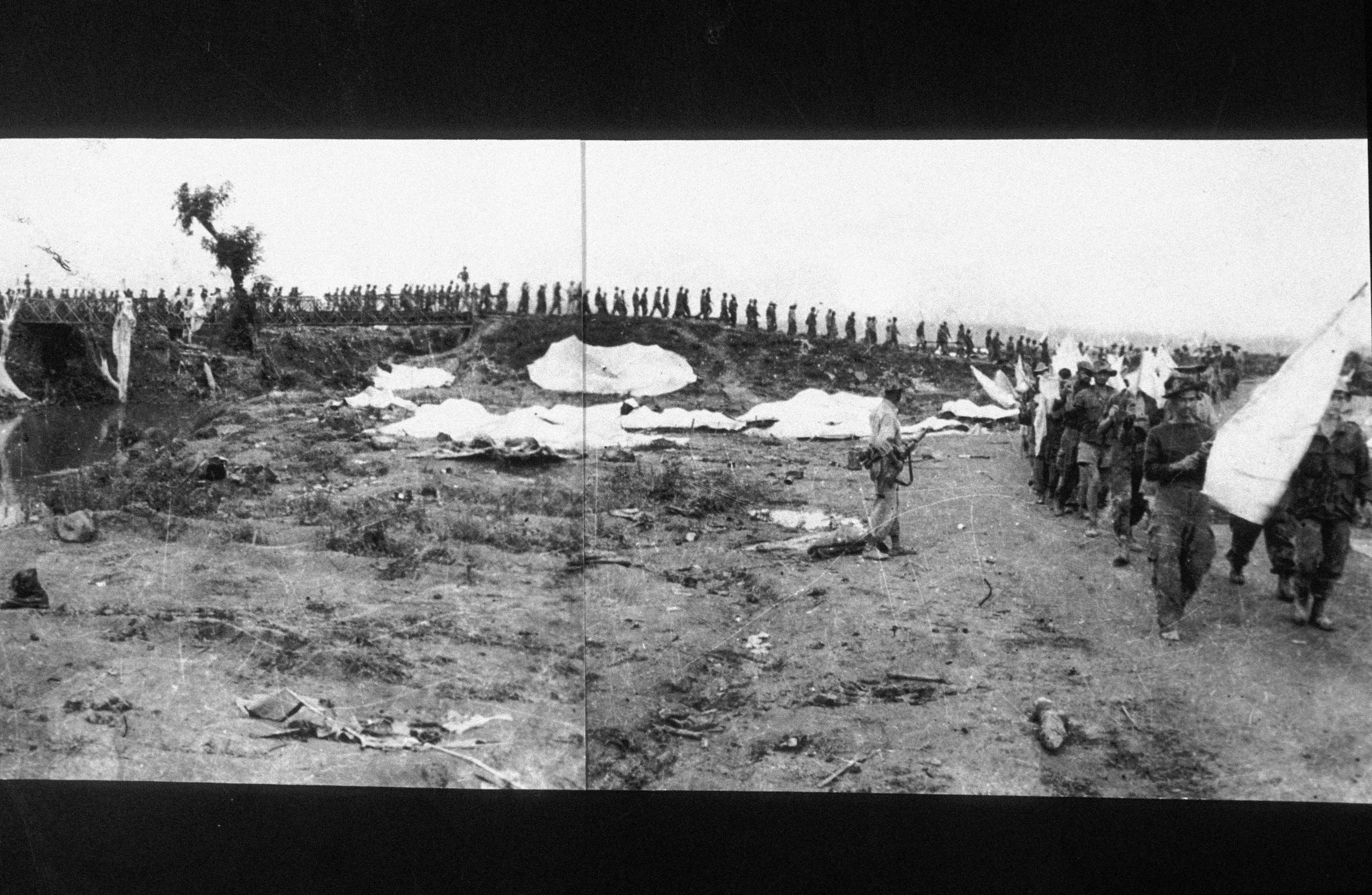
Aftermath.
Losses for France and its allies in Indochina totaled over 90,000 killed and over 75,000 wounded. Roughly 175,000 Vietminh died in the war, as did about 125,000 Vietnamese civilians.
The Geneva Accords divided Vietnam into the Communist Democratic Republic of Vietnam (DRV), commonly called North Vietnam, and the non-Communist Republic of Vietnam (RVN), commonly called South Vietnam. The accords called for the division to be temporary and for national elections to be held in 1956 to reunify the country. The elections were never held. In 1957, Vietminh troops rebelled in South Vietnam, beginning the Vietnam War.

